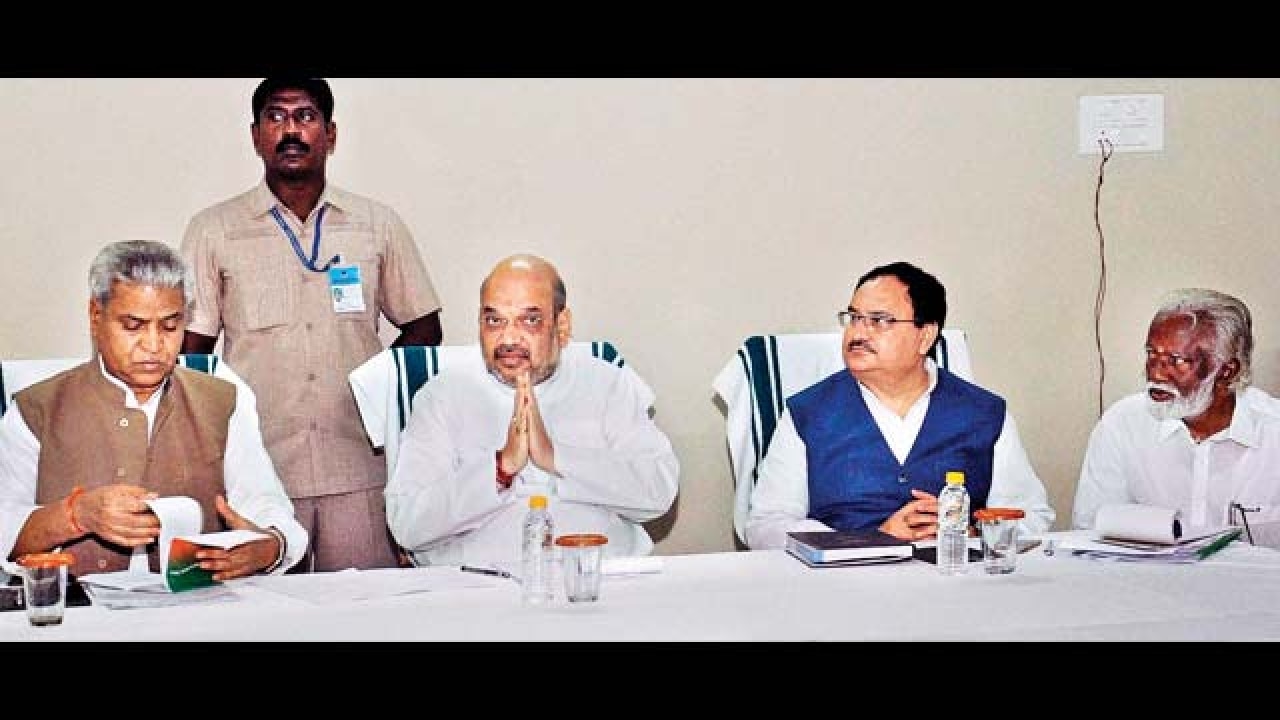
The ding-dong battle in the electoral arena in Kerala between the Congress-led UDF and the left-of-centre LDF in successive elections has been following a set pattern since the early 1980s of incumbent governments being voted out.
Pollsters are keenly watching if this time around a third front led by the BJP will emerge on the scene but though the BJP’s share in total votes has been steadily going up as a reflection of widespread disillusionment with the two existing fronts, the goal of winning a significant number of Assembly seats will predictably continue to elude the saffron party.
BJP insiders are, however, hoping against hope that the party would manage to win at least two or three seats and in a state where the battle is as keen as it can be, even that could make the saffron party a balancing factor.
The BJP is indeed playing for long-term stakes in a state where Hindu vote consolidation on which the party is relying heavily, seems a pipe dream. The Hindus in fact account for 54 per cent of Kerala’s population but minority Muslims and Christians with 26.56 per cent and 18.3 per cent respectively as per the 2011 census are far more cohesive and politically organised.
The Hindus have largely been voting for the Left Democratic Front which is headed by the CPI (M), in preference to the Congress. No attempt to consolidate the Hindu vote bank has so far succeeded but even partial consolidation will give the Hindus the leverage they need to be counted upon as an important vote bank.
People at large are doubtless wary of the BJP because religious polarisation among Hindus has not been part of the state’s ethos. But with skeletons tumbling out of Congress cupboards with breathtaking regularity, the BJP’s systematic campaign to build a base with active help from RSS cadres could pay off in at least a small way.
While the BJP’s handicap is that it has no towering leader in Kerala, it is banking on the president of the Sree Narayana Dharma Paripalana Yogam, Vellapally Natesan, who professes to be a strong votary of Hindu consolidation but has not declared his support for the BJP so far while working for it in a subtle way. Natesan in fact insists that he will not contest the assembly elections.
The Ezhavas and Nairs, the two major Hindu communities in the state, have been working at cross purposes and there is little prospect of their cooperating with each other. The Ezhavas, which the SNDP represents, form the majority among the Hindus. Though Natesan speaks of Hindu unity, the Nair Service Society chief, G Sukumaran Nair, is not in favour of such unity. The Nairs are 14 per cent of the state’s population as against 20 per cent of the Ezhavas. Efforts to unite the SNDP and NSS have been undertaken earlier as well but the NSS has always been against it.
Natesan’s visit to New Delhi recently to meet Prime Minister Narendra Modi and BJP chief Amit Shah led to understandable speculation about a possible alliance between the SNDP and the BJP but for the record Natesan has been denying that there is anything going on between the two parties. He insists that he had gone to Delhi only to invite Modi for a function in Kerala.
There is, however, no mistaking the fact that Natesan has become the darling of the Hindutva forces in Kerala after his call for Hindu unity and the unstinted support he extended to the ghar wapsi campaign of the Vishwa Hindu Parishad last year aimed at converting non-Hindus to Hinduism.
The BJP’s real success would lie not merely in weaning away the Ezhavas from the Left in substantial numbers but also in convincing a sizeable section of Nairs that they must come under the Hindu vote consolidation umbrella. That would be a huge challenge especially in a state like Kerala where religious cohesion among Hindus seems a far cry.
Recently, when the results of the by-election to the Aruvikkara assembly seat were declared, the BJP’s vote share had swelled from 6 per cent to 24 per cent, reflecting a new hope for the BJP.
There is an undoubted groundswell of disgust with the two fronts among people at large due to rampant corruption and mismanagement but is the Kerala BJP equipped to make a mark at the head of a possible Third Front? This is a question on everyone’s lips in the state today.
The Congress looks to be on a losing wicket this time around and its woes have been compounded by the vigilance court in Trissur filing a First Information Report and launching an investigation into Chief Minister Oommen Chandy’s role in the “solar scam.” Whether the Congress high command persists with Chandy in the saddle in the run-up to the elections or it replaces him is still uncertain but while the ‘solar scam’ may benefit the LDF, the benefits to the BJP may well be illusory given the narrow base of the BJP in the state.
The BJP’s anti-beef campaign may have found favour with the die-hard Hindus but it is common knowledge that a large section of Hindus in the state eat beef and do not support a ban on it. Beef, therefore, is not an emotional issue in Kerala.
As in Kerala, the BJP is a marginal player in West Bengal too especially with the likelihood of a tie-up between the Left parties and the Congress to meet the stiff challenge of the Trinamool Congress in the upcoming Assembly polls.
Like in Kerala, there is hope for the BJP to increase its vote share in West Bengal, but winning seats is a different kettle of fish. With Tamil Nadu, Punjab and Assam, the other states which are scheduled to go to polls in coming months, attention would be focussed on the BJP performance in Assam and to a smaller extent in Punjab.